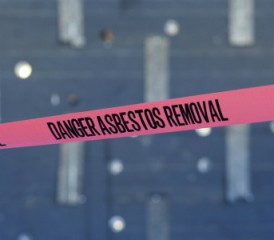You May Have Options if Asbestos Hits Close to Home

When I pass a construction site, I often wonder if proper safety precautions are in place to prevent asbestos exposure. A few steps later, I usually relax and stop worrying about it.
But what if you encounter an actual asbestos danger? Even worse, what if it’s in your home? Walking down the street won’t fix that problem.
Outreach Coordinator Ben Leer recently shared how Laura Haywood found out her new home was undergoing asbestos abatement. News about asbestos exposure usually involve workers who’ve been exposed on the job.
Laura’s story raises a good question: Do renters also have legal rights related to asbestos exposure?
Your Right to Know
Chances are you’ve been in a government building or business containing asbestos. At some point, you may have even lived somewhere asbestos was present, especially if it was built before 1981.
The United States hasn’t banned all asbestos use. So unfortunately you don’t exactly have a right to an asbestos-free home. But you do have the right to know whether asbestos is present.
Under regulations issued by the U.S. Occupational Health and Safety Administration (OSHA) in 1981, landlords must disclose whether asbestos is present. They usually include this information in your rental agreement. So read your lease carefully.
Your Right to Avoid Asbestos Exposure
In addition to knowing about the presence of asbestos, tenants generally have a right to a livable home. This includes avoiding exposure to asbestos fibers. OSHA’s regulations and the laws of most states help protect this right by placing certain duties on landlords.
OSHA’s standards presume that buildings constructed before 1981 have asbestos-containing materials. As result, building owners are responsible for locating where asbestos is located and how much is present.
That way they can’t claim they don’t know about asbestos. They have to check and also follow standards for monitoring levels and containing asbestos. This includes handling asbestos properly during repairs and renovations.
State laws also protect tenants. Almost all states recognize an “implied warranty of habitability.” Just by renting to you, your landlord promised to provide you with a reasonably safe home. This includes properly containing any asbestos risks.
What to Do If Your Landlord Places You at Risk
If your landlord doesn’t tell you about the presence of asbestos, violates other OSHA’s regulations, or fails to provide a liveable home by exposing you to asbestos, attend to your safety first. Contact local environmental, housing or public officials immediately.
Asbestos-related illnesses usually take many years to diagnose, so see a doctor to start regular health monitoring now. If you later develop an asbestos-related disease, then you may be able to sue the landlord for your injuries.
You may be able to recover money for medical expenses, pain and suffering, and other losses. Remember to keep copies of your rental agreement and any information about asbestos abatement in your house or apartment building. These documents can help prove your exposure occurred on the landlord’s property.
You generally have to show signs of an injury in order to file an asbestos personal injury claim. But depending on your state’s laws, you may also have other legal options as a renter.
For instance, you may be able to get out of your lease while you move to a safer home. Contact a qualified asbestos attorney in your state can for more information and to help you file an appropriate claim in landlord-tenant court.
Also keep records of any landlord-tenant claim you make. If you ever need to file an asbestos personal injury claim, these records can help prove that your landlord was responsible for your asbestos exposure. That’s where a qualified mesothelioma lawyer can help.